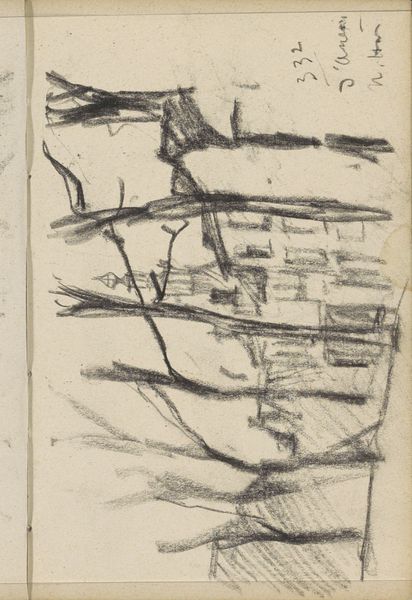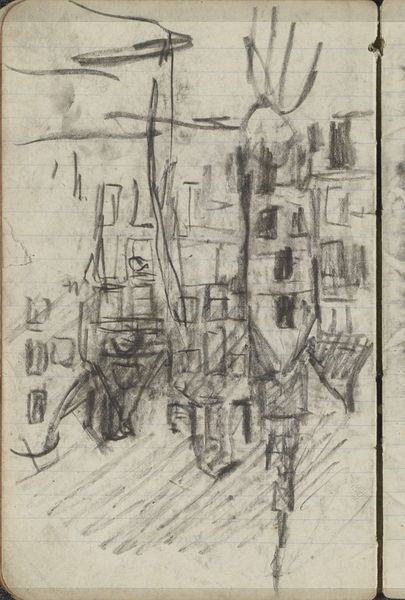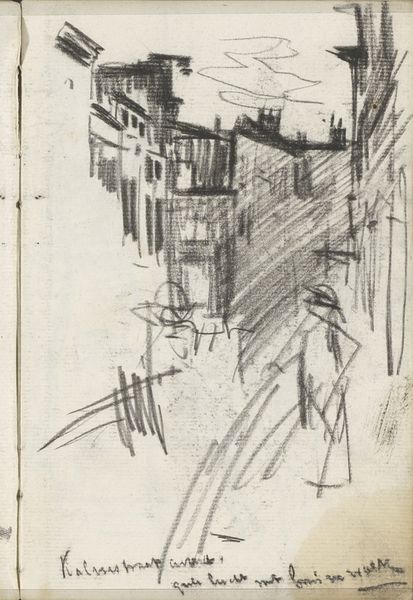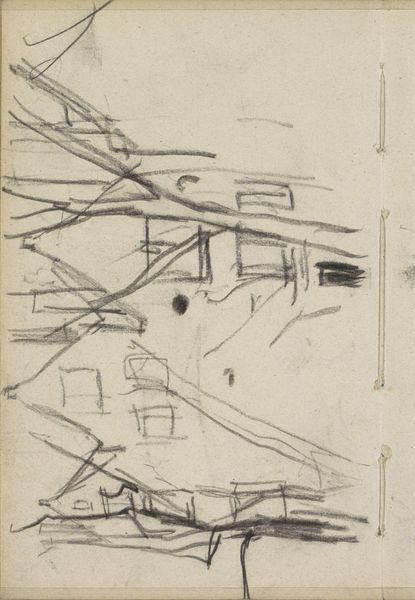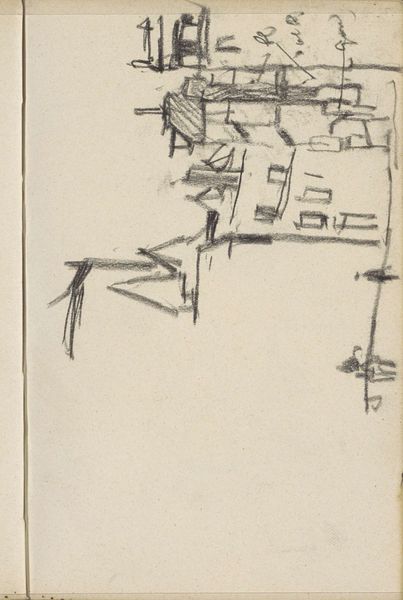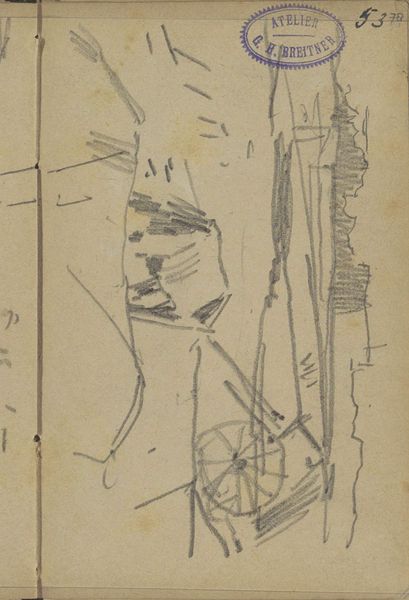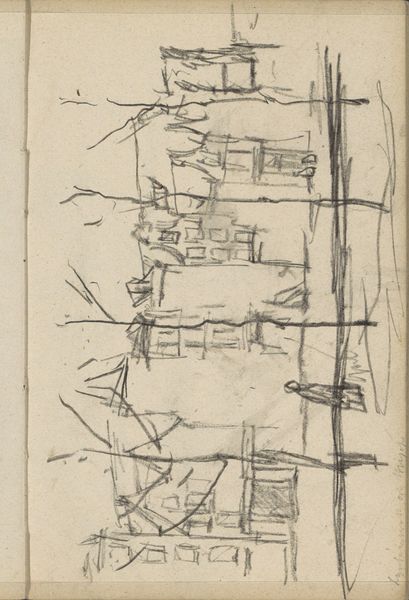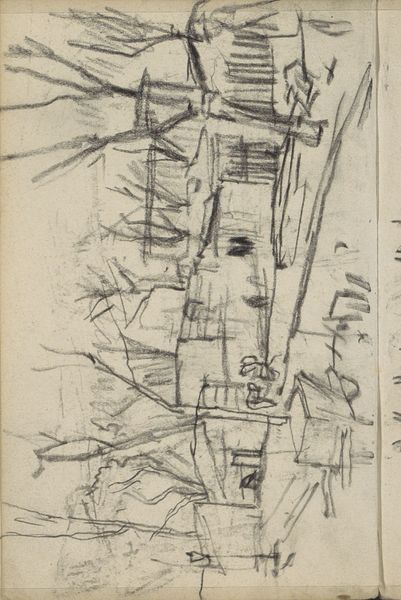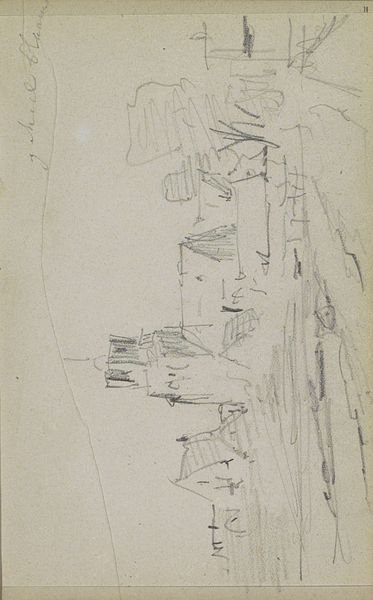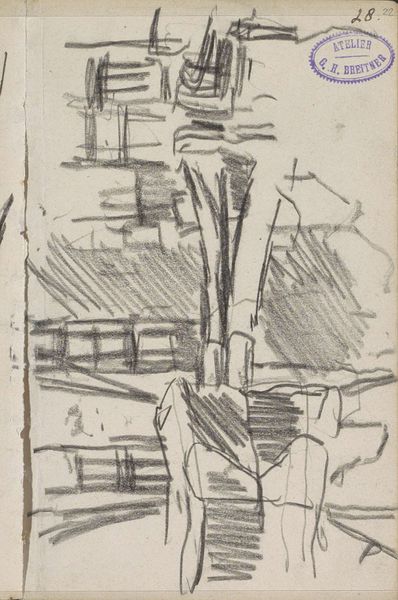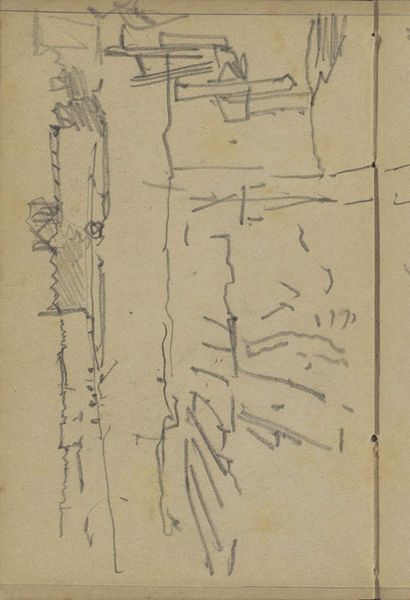
Copyright: Rijks Museum: Open Domain
Editor: This is George Hendrik Breitner's "Gezicht in Amsterdam nabij de Hogesluis," dating from around 1886 to 1903. It's a graphite and pencil drawing, and you can see the sketchiness and unfinished nature. What stands out to me is the perspective; it's a very direct, almost confrontational view of the architecture. How do you interpret this work? Curator: Well, I see Breitner's drawing as a commentary on urban life during the late 19th century. Amsterdam was changing rapidly, grappling with industrialization and social stratification. Do you see how the direct perspective flattens the image, almost like the buildings are pressing down on the viewer? Editor: I do, it feels almost claustrophobic. Curator: Exactly! This might reflect the sense of unease and alienation felt by some during this period. Breitner wasn't just depicting a cityscape; he was capturing the social and psychological impact of modernization on Amsterdam’s inhabitants. Consider who had access to such rapidly growing cityscapes versus who were left behind, literally in the shadows. What does the incompleteness of the sketch suggest to you? Editor: Perhaps the fleeting nature of urban life, things changing too quickly to capture it all? Curator: Precisely. The rapid strokes, the unfinished details—they mirror the ephemeral nature of urban experience, hinting at the transience and precarity of modern existence, questioning the power structures inherent in urban development. Editor: I never considered it that way, but now I see so much more in the work than just a simple cityscape sketch. It really speaks to the rapid change and its social effects. Curator: It's amazing how a simple sketch can unveil complex layers of historical and social meaning, reflecting broader dialogues about identity, progress, and the human condition within urban spaces.
Comments
No comments
Be the first to comment and join the conversation on the ultimate creative platform.

